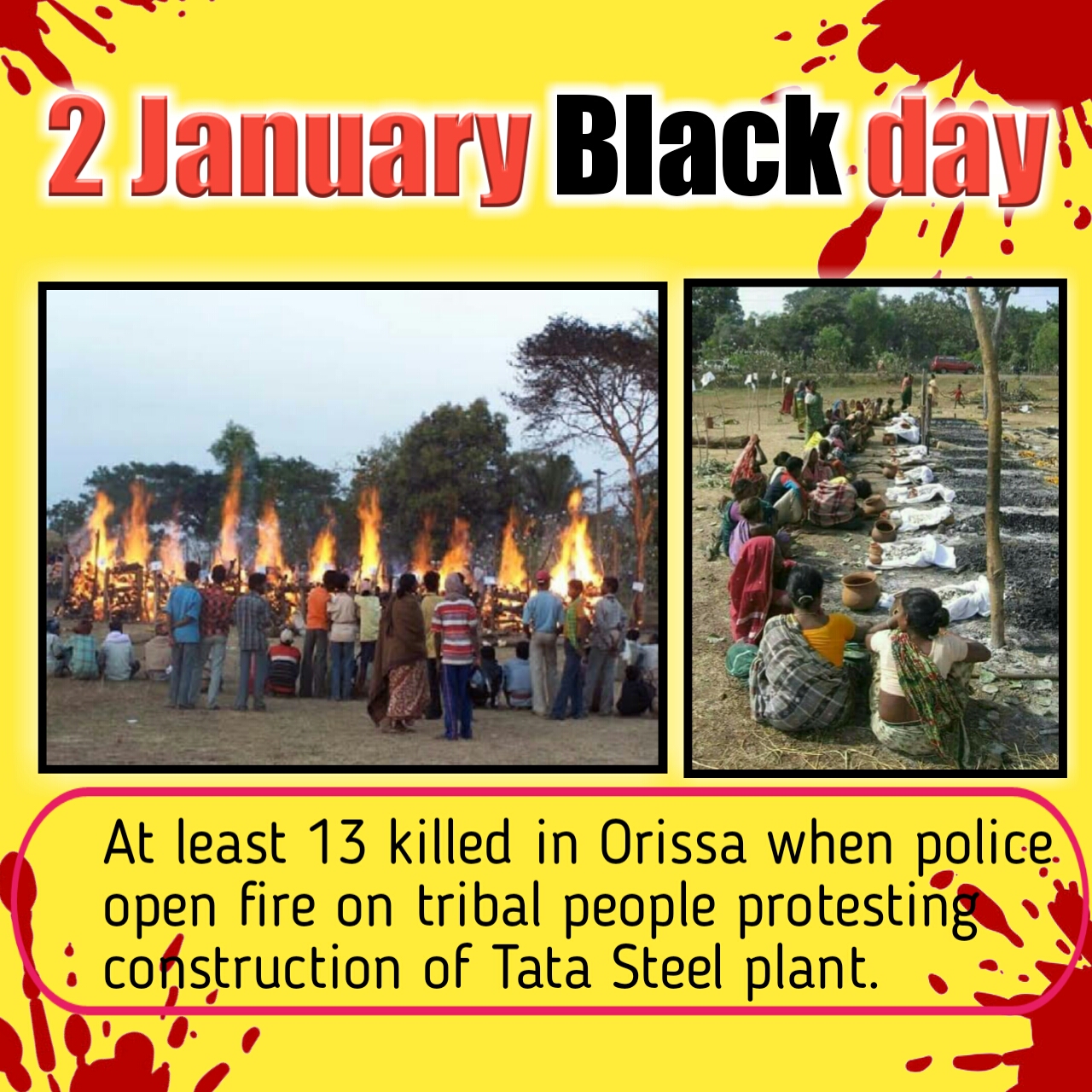
Adivasis (indigenous communities of India) assembled in large numbers at Jajpur in Odisha on January 2, 2021 to commemorate the 15-year anniversary of the Kalinganagar massacre wherein armed forces allegedly killed at least 13 Adivasi men, women and children allegedly to protect the Odisha administration and the Tata Steel plant.
Every year following the 2006 massacre, the Adivasis from the Kalinganagar area march carrying traditional weapons such as axes and bows and arrows from various parts of the state to Ambagadia where their kin were indiscriminately slain for allegedly “disrupting law and order”.
The memory is particularly fresh in the minds of Adivasis, not only because of the unwarranted firing, but also because their community’s blood was spilt in vain. 15 years ago, nearly 800 Adivasis protested the steel plant project that was sanctioned over their ancestral land. Adivasis argued that the state government had handed over their cattle grazing land to the Tata Steel plant allowing it to build a wall to keep locals from entering the area.
Protesters demanded a fair compensation for their grievances as they pointed out the Odisha government never implemented land settlements as per the Odisha Survey and Settlement Act prior to declaring the area as Kalinganagar Industrial Complex. Later reports, pertaining to the incident stated that 7,057 acres belonged to private owners out of 13,000 acres of land. However, the area only came under government control after it acquired the land from the Sukinda royal family under the Odisha Estate Abolition Act 1951. As such, they hoped that their government would listen to their grievances.
Instead, they were met with Special Armed Police Forces (who served as security personnel for the District Collector), the Superintendent of Police and Tata officials. Protesters since then have repeatedly alleged that the forces indiscriminately opened fire at the unarmed Adivasis killing men, women and even children. Some of the surviving injured died while being transported to the hospital. Families received mutilated bodies that were missing body parts. The incident was one of the most gruesome examples of state violence yet the massacre was shockingly ignored by the media.
People of Kalinganagar were labelled Maoists and the matter was allegedly hushed up. As renowned journalist Siddharth Varadarajan told SabrangIndia that the aftermath of the massacre received no live media coverage let alone played-down reports. This despite the fact that locals accused the police of mutilating bodies of victims.
Later, the P K Mohanty Commission published an inquiry reported that was heavily criticised by members of various people’s organisations such as People’s Union for Civil Liberties (PUCL,) Women against Sexual Violence and State Repression (WSS). They condemned the report for its bias towards the private company and the state administration.
The Mohanty Commission report justified the presence of 12 platoons of police (over 500 armed police personnel) with modern arms and weapons by arguing that the protesters carried “deadly weapons” such as axes, bows and arrows.
Organisations members questioned how villagers carrying traditional weapons to protect their lands and livelihoods were termed ‘illegal’ and ‘unconstitutional’ while the presence of armed forces to protect Tata’s construction work was deemed “adequate” and “not to be faulted.” They also dismissed police’s claim of “self-defence” as yet another attempt by the state government to establish a monopoly on violence.
Another travesty committed by the report was that it held three doctors responsible for chopping off the palms of the deceased after post-mortem yet absolved them of any “oblique intent”. Rather, the report highlighted the role of political activists who allegedly “hijacked and converted the agitation.” To make matters worse, the government kept the compensation money under the guise of “public interest.” The Commission never asked the government to elaborate on this claim.
The condemnable incident is still fresh in the community’s memory that continues annual protests to condemn the actions of the state government and to remind people of what they suffered. Yet, the Collector, the Superintendent of Police and Tata officials allegedly involved in this brutal attack were never punished or even subject to questioning.
Related:
Adivasis in Odisha Killed Cold Bloodedly by Police: Fact-Finding Report
The protest of poor marginalised people is not considered news
Citizens protest Commission’s report on 2006 Kalinganagar firing on Adivasis